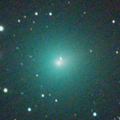
|
It approached to Earth down to 0.08 a.u. in mid December, and it brightened up to 3.4 mag (Dec. 14, Seiichi Yoshida). it looked so large as 3 times of Moon. Now it is fading. But it is very bright as 5.5 mag still now (Jan. 3, Carlos Labordena). In the Northern Hemisphere, it stays observable in excellent condition. In the Southern Hemisphere, it is not observable until February.
Date(TT) R.A. (2000) Decl. Delta r Elong. m1 Best Time(A, h)
Jan. 5 7 44.65 59 4.1 0.143 1.100 142 4.5 0:47 (180, 66)
Jan. 12 8 34.20 59 23.6 0.182 1.130 140 5.2 1:10 (180, 66)
|
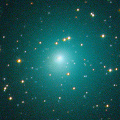
|
Now it is very bright as 9.1 mag (Jan. 1, Juan Jose Gonzalez). It is observable in excellent condition in the Northern Hemisphere. It stays low in the Southern Hemisphere.
Date(TT) R.A. (2000) Decl. Delta r Elong. m1 Best Time(A, h)
Jan. 5 3 7.13 29 23.5 0.771 1.577 127 9.7 20:10 ( 0, 84)
Jan. 12 3 23.84 28 35.2 0.844 1.616 124 10.2 19:59 ( 0, 84)
|
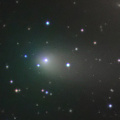
|
Now it is bright as 9.9 mag (Jan. 1, Juan Jose Gonzalez). It stays 9-10 mag until January. In the Northern Hemisphere, it stays observable in good condition for a long time until it fades out. It locates low in the Southern Hemispehre.
Date(TT) R.A. (2000) Decl. Delta r Elong. m1 Best Time(A, h)
Jan. 5 8 35.48 42 6.4 0.800 1.732 152 10.0 1:40 (180, 83)
Jan. 12 8 34.66 44 6.2 0.830 1.768 154 10.3 1:12 (180, 81)
|
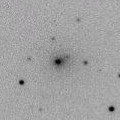
|
Bright new comet. Now it is very bright as 10.4 mag (Jan. 3, Katsumi Yoshimoto). It will approach to Earth down to 0.3 a.u. in February. Then it will brighten up to 7 mag and will be observable in excellent condition.
Date(TT) R.A. (2000) Decl. Delta r Elong. m1 Best Time(A, h)
Jan. 5 14 13.08 -23 38.0 1.449 1.372 65 10.7 5:38 (335, 27)
Jan. 12 14 7.12 -22 43.2 1.217 1.338 74 10.2 5:38 (343, 30)
|
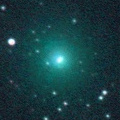
|
Now it is 11.8 mag (Dec. 5, Sandor Szabo). It stays at 11 mag until February. In the Northern Hemisphere, it stays observable for a long time until it fades out. But it stays extremely low. It will never be observable again in the Southern Hemisphere.
Date(TT) R.A. (2000) Decl. Delta r Elong. m1 Best Time(A, h)
Jan. 5 19 7.35 20 9.0 2.356 1.767 42 11.0 18:32 (110, 7)
Jan. 12 19 29.40 22 36.4 2.357 1.791 44 11.2 5:38 (248, 8)
|

|
It brightened up to 7.7 mag in June (June 19, Juan Jose Gonzalez). Now it is fading. But it is still bright as 10.6 mag (Dec. 26, Chris Wyatt). In the Southern Hemisphere, it stays observable in good condition for a long time until the comet will fade out. In the Northern Hemisphere, it is not observable for a long time until autumn in 2019 when the comet fades out down to 16 mag.
Date(TT) R.A. (2000) Decl. Delta r Elong. m1 Best Time(A, h)
Jan. 5 22 37.88 -85 54.1 3.041 2.772 64 11.6 18:32 ( 3,-32)
Jan. 12 0 41.62 -83 57.6 3.053 2.819 67 11.7 18:37 ( 2,-29)
|

|
Now it is 11.9 mag (Dec. 31, Seiichi Yoshida). It stays 12 mag for a long time until spring.
Date(TT) R.A. (2000) Decl. Delta r Elong. m1 Best Time(A, h)
Jan. 5 7 11.71 -19 12.0 2.402 3.201 138 12.5 0:17 ( 0, 36)
Jan. 12 6 55.74 -20 28.1 2.452 3.240 136 12.6 23:28 ( 0, 34)
|

|
Now it is 13.3 mag (Dec. 5, Sandor Szabo). It stays at 12-13 mag for a long time until autumn in 2019.
Date(TT) R.A. (2000) Decl. Delta r Elong. m1 Best Time(A, h)
Jan. 5 22 59.99 -4 8.7 2.442 2.137 60 12.8 18:32 ( 50, 38)
Jan. 12 23 12.92 -3 6.0 2.491 2.119 56 12.8 18:37 ( 55, 35)
|
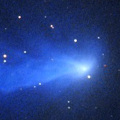
|
Now it is 13.1 mag (Dec. 4, Thomas Lehmann). It will be fading slowly after this. It is observable in good condition in the Northern Hemisphere. In the Southern Hemisphere, it is not observable until summer in 2019.
Date(TT) R.A. (2000) Decl. Delta r Elong. m1 Best Time(A, h)
Jan. 5 15 29.01 40 42.7 3.626 3.593 80 13.0 5:38 (247, 55)
Jan. 12 15 37.09 40 58.9 3.626 3.640 83 13.0 5:38 (247, 59)
|
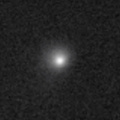
|
Now it is 13.9 mag (Dec. 28, Chris Wyatt). It will brighten up to 10-11 mag in autumn in 2019. It stays observable in good condition for a while in the Southern Hemisphere. In the Northern Hemisphere, it stays extremely low for a long time.
Date(TT) R.A. (2000) Decl. Delta r Elong. m1 Best Time(A, h)
Jan. 5 1 3.09 -33 3.7 4.370 4.279 78 13.5 18:32 ( 6, 22)
Jan. 12 1 2.35 -31 10.5 4.420 4.237 72 13.5 18:37 ( 14, 23)
|
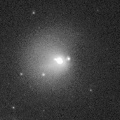
|
Now it is bright as 12.9 mag (Dec. 5, Sandor Szabo).
Date(TT) R.A. (2000) Decl. Delta r Elong. m1 Best Time(A, h)
Jan. 5 23 1.16 0 13.5 6.153 5.768 62 13.7 18:32 ( 53, 41)
Jan. 12 23 5.04 0 35.5 6.250 5.767 56 13.7 18:37 ( 60, 36)
|
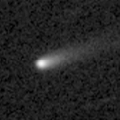
|
Now it is 13.8 mag (Dec. 12, Toshihiko Ikemura, Hirohisa Sato). It is observable at 14 mag in excellent condition until March.
Date(TT) R.A. (2000) Decl. Delta r Elong. m1 Best Time(A, h)
Jan. 5 11 25.32 -1 15.5 1.002 1.641 111 13.9 4:29 ( 0, 54)
Jan. 12 11 33.33 -2 38.7 0.963 1.653 116 13.8 4:10 ( 0, 52)
|
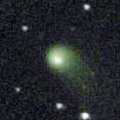
|
Now it is 14.0 mag (Nov. 14, Kunihiro Shima). It stays 13-14 mag until summer in 2019. In the Northern Hemisphere, it is appearing in the morning sky. It will appear in late January also in the Southern Hemisphere.
Date(TT) R.A. (2000) Decl. Delta r Elong. m1 Best Time(A, h)
Jan. 5 17 12.30 -11 6.1 4.085 3.254 28 14.2 5:38 (291, 10)
Jan. 12 17 16.42 -12 17.6 4.025 3.252 33 14.1 5:38 (296, 14)
|
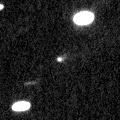
|
Now it is 14.8 mag (Dec. 10, Toshihiko Ikemura, Hirohisa Sato). It will brighten up to 13-14 mag in winter, and it will be observable in excellent condition. It locates low in the Southern Hemisphere.
Date(TT) R.A. (2000) Decl. Delta r Elong. m1 Best Time(A, h)
Jan. 5 11 29.20 28 5.2 1.473 2.141 119 14.3 4:33 ( 0, 83)
Jan. 12 11 34.53 28 33.5 1.411 2.135 125 14.2 4:11 ( 0, 83)
|
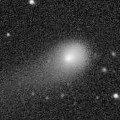
|
Now it is 14.4 mag (Dec. 12, Toshihiko Ikemura, Hirohisa Sato). It will be fading slowly after this. It is observable in excellent condition until spring in the Northern Hemispehre. In the Southern Hemisphere, it will be hardly observable after this.
Date(TT) R.A. (2000) Decl. Delta r Elong. m1 Best Time(A, h)
Jan. 5 11 30.94 40 9.1 4.071 4.658 121 14.4 4:35 (180, 85)
Jan. 12 11 21.66 41 6.2 4.020 4.693 128 14.4 3:59 (180, 84)
|

|
Now it is 14.3 mag (Nov. 30, Seiichi Yoshida). It stays at 14 mag until winter. It is observable in excellent condition in the Northern Hemisphere. In the Southern Hemisphere, it is not observable until summer in 2019.
Date(TT) R.A. (2000) Decl. Delta r Elong. m1 Best Time(A, h)
Jan. 5 13 30.40 79 13.2 1.504 2.070 110 14.5 5:38 (184, 46)
Jan. 12 13 28.45 79 56.4 1.522 2.094 111 14.5 5:38 (182, 45)
|
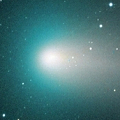
|
It brightened up to 6.8 mag in September (Sept. 17, Seiichi Yoshida). Now it is fading rapidly. It has already faded down to 13.8 mag (Dec. 21, Thomas Lehmann). It is observable in excellent condition in the Southern Hemisphere. It locates low after this in the Northern Hemisphere.
Date(TT) R.A. (2000) Decl. Delta r Elong. m1 Best Time(A, h)
Jan. 5 6 19.68 -36 15.6 1.120 1.825 120 14.8 23:20 ( 0, 19)
Jan. 12 6 13.18 -34 15.8 1.185 1.890 120 15.2 22:46 ( 0, 21)
|

|
Now it is 14.5 mag (Aug. 16, P. Camilleri, H. Williams). It stays 15 mag from 2018 to 2019, and it will be observable for a long time in the Southern Hemisphere. In the Northern Hemisphere, it will never be observable again.
Date(TT) R.A. (2000) Decl. Delta r Elong. m1 Best Time(A, h)
Jan. 5 20 1.18 -64 52.6 4.586 3.929 43 15.0 18:32 ( 29,-28)
Jan. 12 20 23.13 -63 50.8 4.588 3.926 42 14.9 18:37 ( 30,-29)
|
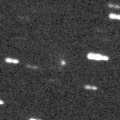
|
Now it is bright as 15.1 mag (Nov. 21, Artyom Novichonok). It stays 14 mag for a long time in 2019. In the Southern Hemisphere, it is observable in excellent condition. In the Northern Hemisphere, it is observable in low sky until early January, but it will be unobservable after that.
Date(TT) R.A. (2000) Decl. Delta r Elong. m1 Best Time(A, h)
Jan. 5 11 25.58 -42 37.1 3.290 3.446 90 15.1 4:30 ( 0, 12)
Jan. 12 11 20.85 -45 17.5 3.186 3.418 95 15.0 3:57 ( 0, 10)
|
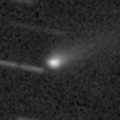
|
It brightened very rapidly up to 13.8 mag in August in 2017 (Aug. 22, Kunihiro Shima). Although it was faint as 16-17 mag in November, it brightened up to 14.7 mag in December (Dec. 12, Toshihiko Ikemura, Hirohisa Sato). In the Northern Hemisphere, it stays observable in excellent condition after this. It stays extremely low in the Southern Hemisphere.
Date(TT) R.A. (2000) Decl. Delta r Elong. m1 Best Time(A, h)
Jan. 5 11 25.46 35 1.0 2.106 2.754 121 15.2 4:29 ( 0, 90)
Jan. 12 11 26.42 36 15.8 2.074 2.784 127 15.4 4:03 (180, 89)
|
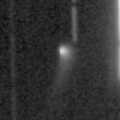
|
Now it is 15.2 mag (Dec. 10, Toshihiko Ikemura, Hirohisa Sato). It stays 15 mag until March. It is observable in excellent condition in the Northern Hemisphere. It is not observable at all in the Southern Hemisphere.
Date(TT) R.A. (2000) Decl. Delta r Elong. m1 Best Time(A, h)
Jan. 5 9 51.94 72 18.2 2.613 3.278 125 15.2 2:58 (180, 53)
Jan. 12 8 57.16 75 7.5 2.607 3.277 125 15.2 1:38 (180, 50)
|

|
New bright comet discovered by three amateur comet hunters. It brightened rapidly from 10 mag up to 8 mag just after the discovery. But after that, the brightness evolution became slow, and it faded down to 9.5 mag in December (Dec. 9, Alan Hale). In the Northern Hemisphere, it will never be observable again after this. In the Southern Hemisphere, it will appear in the morning sky in February. But it may be fainter than 18 mag at that time.
Date(TT) R.A. (2000) Decl. Delta r Elong. m1 Best Time(A, h)
Jan. 5 19 41.97 -23 13.1 1.848 0.893 9 15.4 18:32 ( 69,-11)
Jan. 12 19 49.65 -25 1.0 2.002 1.027 5 16.3 18:37 ( 71,-16)
|
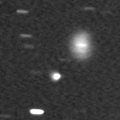
|
Now it is 15.0 mag (Dec. 5, Sandor Szabo). It is expected to brighten up to 7-8 mag in 2020. In 2018, it will be observable at 15-16 mag in good condition from autum to winter.
Date(TT) R.A. (2000) Decl. Delta r Elong. m1 Best Time(A, h)
Jan. 5 3 5.05 -3 55.5 5.116 5.625 116 15.5 20:06 ( 0, 51)
Jan. 12 3 2.56 -3 20.0 5.156 5.564 109 15.5 19:36 ( 0, 52)
|
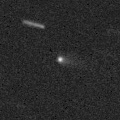
|
Although it was faint as 18 mag until Dec. 10, it suddenly brightened in outburst up to 15.4 mag on Dec. 12 (Dec. 12, A. Heinze). It stays observable in good condition for a while.
Date(TT) R.A. (2000) Decl. Delta r Elong. m1 Best Time(A, h)
Jan. 5 1 51.19 5 23.6 2.186 2.600 103 16.1 18:53 ( 0, 61)
Jan. 12 1 56.39 6 21.3 2.289 2.614 98 16.3 18:37 ( 3, 61)
|
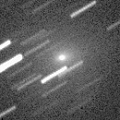
|
It approached to Earth down to 0.3 a.u., and brightened up to 8.3 mag in July (July 22, Juan Jose Gonzalez). Now it is fading. It has faded down to 13.2 mag in September (Sept. 24, Thomas Lehmann). In the Northern Hemisphere, it already locates high. It is appearing in the morning sky also in the Southern Hemisphere.
Date(TT) R.A. (2000) Decl. Delta r Elong. m1 Best Time(A, h)
Jan. 5 15 28.32 -0 54.2 2.941 2.527 56 16.4 5:38 (302, 36)
Jan. 12 15 27.01 0 9.2 2.888 2.602 63 16.5 5:38 (308, 41)
|
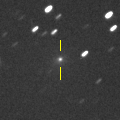
|
Now it is 16.7 mag (Nov. 29, Toshihiko Ikemura, Hirohisa Sato). It is observable at 16.5 mag in good condition in winter.
Date(TT) R.A. (2000) Decl. Delta r Elong. m1 Best Time(A, h)
Jan. 5 4 21.21 8 47.7 0.909 1.774 139 16.5 21:22 ( 0, 64)
Jan. 12 4 20.70 11 47.2 0.946 1.772 133 16.6 20:55 ( 0, 67)
|

|
Now it is 16.1 mag (Dec. 12, Toshihiko Ikemura, Hirohisa Sato). It stays 16-17 mag for a long time until 2020. It is observable in good condition in the Northern Hemisphere. It is not observable at all in the Southern Hemisphere.
Date(TT) R.A. (2000) Decl. Delta r Elong. m1 Best Time(A, h)
Jan. 5 11 58.86 71 47.9 7.969 8.451 116 16.6 5:03 (180, 53)
Jan. 12 11 59.06 72 18.1 7.948 8.450 117 16.6 4:35 (180, 53)
|
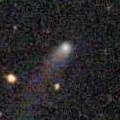
|
It brightened up to 14.7 mag in early 2018 (Jan. 25, Catalina Sky Survey). Now it is fading slowly. Now it is 16.4 mag (Dec. 10, Toshihiko Ikemura, Hirohisa Sato). In the Northern Hemisphere, it stays observable in good condition for a long time until the comet fades out. It is never observable again in the Southern Hemisphere.
Date(TT) R.A. (2000) Decl. Delta r Elong. m1 Best Time(A, h)
Jan. 5 6 13.85 72 58.0 5.446 6.116 129 16.7 23:14 (180, 52)
Jan. 12 5 50.47 73 6.2 5.501 6.141 126 16.7 22:24 (180, 52)
|
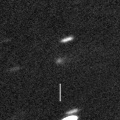
|
Now it is 17.0 mag (Dec. 31, Toshihiko Ikemura, Hirohisa Sato). It stays observable at 17 mag in good condition until February. It locates somewhat low in the Southern Hemisphere.
Date(TT) R.A. (2000) Decl. Delta r Elong. m1 Best Time(A, h)
Jan. 5 8 25.93 23 48.7 1.556 2.504 160 16.7 1:31 ( 0, 79)
Jan. 12 8 20.39 23 37.9 1.551 2.522 168 16.8 0:58 ( 0, 79)
|
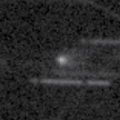
|
Now it is 17.3 mag (Dec. 10, Toshihiko Ikemura, Hirohisa Sato). It is observable at 17 mag in good condition in winter. It locates low in the Southern Hemisphere.
Date(TT) R.A. (2000) Decl. Delta r Elong. m1 Best Time(A, h)
Jan. 5 11 21.05 23 38.1 1.926 2.572 120 17.0 4:25 ( 0, 79)
Jan. 12 11 21.20 24 42.2 1.894 2.613 127 17.0 3:58 ( 0, 80)
|

|
It is expected to brighten up to 10 mag in autumn in 2019. Now it is 17.4 mag (Dec. 10, Toshihiko Ikemura, Hirohisa Sato). In the Northern Hemisphere, it stays observable for a long time while the comet is brightening. In the Southern Hemisphere, it it not observable until mid September in 2019.
Date(TT) R.A. (2000) Decl. Delta r Elong. m1 Best Time(A, h)
Jan. 5 13 44.87 55 45.0 3.073 3.427 102 17.3 5:38 (205, 66)
Jan. 12 13 53.71 58 46.1 2.954 3.357 105 17.1 5:38 (196, 65)
|
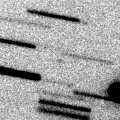
|
Now it is 17.9 mag (Dec. 10, Toshihiko Ikemura, Hirohisa Sato). It is observable at 17 mag in good condition in winter in the Northern Hemisphere. It locates very low in the Southern Hemisphere.
Date(TT) R.A. (2000) Decl. Delta r Elong. m1 Best Time(A, h)
Jan. 5 11 10.98 35 6.8 0.745 1.536 124 17.2 4:15 ( 0, 90)
Jan. 12 11 19.08 35 57.3 0.737 1.556 128 17.2 3:55 (180, 89)
|

|
Now it is 17.1 mag (Dec. 31, Toshihiko Ikemura, Hirohisa Sato). Fading slowly. It stays observable at 17 mag in good condition until summer in 2019.
Date(TT) R.A. (2000) Decl. Delta r Elong. m1 Best Time(A, h)
Jan. 5 11 43.49 6 5.4 9.540 9.923 110 17.2 4:47 ( 0, 61)
Jan. 12 11 43.73 6 16.7 9.443 9.933 117 17.2 4:20 ( 0, 61)
|

|
First return of a new periodic comet discovered in 2014. It has not been recovered yet. Now it is not detected, fainter than 20.0 mag (Dec. 10, Toshihiko Ikemura, Hirohisa Sato). The condition of this apparition is excelllent. It will brighten rapidly, and will be observable at 15.5 mag in excellent condition in March.
Date(TT) R.A. (2000) Decl. Delta r Elong. m1 Best Time(A, h)
Jan. 5 10 24.37 7 15.2 1.224 1.994 128 17.4 3:28 ( 0, 62)
Jan. 12 10 27.59 6 58.9 1.141 1.964 135 17.2 3:04 ( 0, 62)
|
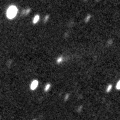
|
Now it is 16.0 mag (Dec. 10, Toshihiko Ikemura, Hirohisa Sato). It was observed at 18 mag in last winter. It will be observable in good condition at 16-17 mag also in this winter.
Date(TT) R.A. (2000) Decl. Delta r Elong. m1 Best Time(A, h)
Jan. 5 7 8.85 2 10.3 2.108 3.048 159 17.3 0:14 ( 0, 57)
Jan. 12 7 4.16 2 19.2 2.127 3.067 159 17.4 23:37 ( 0, 57)
|

|
It brightened up to 7 mag from May to June in 2017. Now it is fading. It has already faded down to 15.9 mag (Dec. 8, Thomas Lehmann). In the Southern Hemisphere, it stays observable for a long time after this. It will never be observable again in the Northern Hemisphere.
Date(TT) R.A. (2000) Decl. Delta r Elong. m1 Best Time(A, h)
Jan. 5 0 52.51 -45 27.2 6.573 6.349 72 17.3 18:32 ( 7, 9)
Jan. 12 0 54.45 -44 24.9 6.702 6.407 68 17.4 18:37 ( 12, 9)
|

|
Now it is 17.0 mag (Dec. 12, Toshihiko Ikemura, Hirohisa Sato). It is observable at 17 mag in good condition in 2019. It locates somewhat low in the Northern Hemisphere.
Date(TT) R.A. (2000) Decl. Delta r Elong. m1 Best Time(A, h)
Jan. 5 15 12.28 -13 56.0 4.207 3.727 54 17.4 5:38 (315, 28)
Jan. 12 15 19.28 -14 23.5 4.126 3.734 60 17.4 5:38 (321, 31)
|
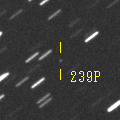
|
Now it is 17.2 mag (Dec. 31, Toshihiko Ikemura, Hirohisa Sato). It is observable at 17.5 mag in excellent condition in January.
Date(TT) R.A. (2000) Decl. Delta r Elong. m1 Best Time(A, h)
Jan. 5 8 14.55 3 24.2 0.710 1.650 153 17.4 1:19 ( 0, 58)
Jan. 12 8 12.93 1 36.0 0.698 1.650 157 17.4 0:50 ( 0, 57)
|
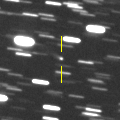
|
Now it is 17.2 mag (Dec. 31, Toshihiko Ikemura, Hirohisa Sato). It was observed at 17 mag in last winter. It will be observable in good condition at 17.5 mag also in this winter.
Date(TT) R.A. (2000) Decl. Delta r Elong. m1 Best Time(A, h)
Jan. 5 4 41.97 4 28.2 7.279 8.074 141 17.5 21:43 ( 0, 59)
Jan. 12 4 37.38 4 17.1 7.365 8.082 134 17.5 21:11 ( 0, 59)
|
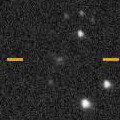
|
It stays 16 mag for a long time from 2019 to 2020. It is observable in excellent condition in the Southern Hemisphere. It is hardly observable in the Northern Hemisphere.
Date(TT) R.A. (2000) Decl. Delta r Elong. m1 Best Time(A, h)
Jan. 5 14 12.91 -36 0.1 4.933 4.569 62 17.6 5:38 (339, 15)
Jan. 12 14 15.25 -37 30.8 4.794 4.529 68 17.5 5:38 (345, 15)
|
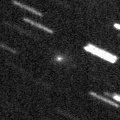
|
First return of a new periodic comet which brightened up to 17.5 mag in 2010. Now it is 17.1 mag (Dec. 31, Toshihiko Ikemura, Hirohisa Sato). It will be fading after this, and will be fainter than 18 mag in late January. It is observable in excellent condition in the Northern Hemisphere. It locates low in the Southern Hemisphere.
Date(TT) R.A. (2000) Decl. Delta r Elong. m1 Best Time(A, h)
Jan. 5 5 47.40 37 32.1 1.147 2.093 158 17.5 22:48 (180, 87)
Jan. 12 5 44.07 37 38.9 1.197 2.116 151 17.6 22:18 (180, 87)
|
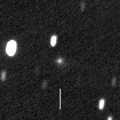
|
Now it is 16.9 mag (Dec. 31, Toshihiko Ikemura, Hirohisa Sato). It is observable at 17.5 mag until January, in good condition in the Northern Hemisphere. It locates very low in the Southern Hemisphere.
Date(TT) R.A. (2000) Decl. Delta r Elong. m1 Best Time(A, h)
Jan. 5 6 2.39 43 43.0 2.918 3.835 155 17.6 23:03 (180, 81)
Jan. 12 5 57.03 43 53.9 2.961 3.848 150 17.6 22:30 (180, 81)
|

|
It was expected to be observable at 17.5 mag in good condition in winter in the Northern Hemisphere. But actually, it is so faint as 21.0 mag (Oct. 5, K. Sarneczky, et. al). It locates low in the Southern Hemisphere.
Date(TT) R.A. (2000) Decl. Delta r Elong. m1 Best Time(A, h)
Jan. 5 5 19.18 34 41.1 2.112 3.030 154 17.7 22:20 ( 0, 90)
Jan. 12 5 14.66 34 50.3 2.149 3.024 147 17.7 21:48 ( 0, 90)
|
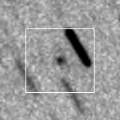
|
Now it is 17.6 mag (Dec. 31, Toshihiko Ikemura, Hirohisa Sato). First return of a new periodic comet which brightened up to 16 mag in 2011. It is observable at 17.5 mag in good condition in winter.
Date(TT) R.A. (2000) Decl. Delta r Elong. m1 Best Time(A, h)
Jan. 5 2 39.49 11 54.0 1.794 2.406 117 17.7 19:41 ( 0, 67)
Jan. 12 2 43.30 11 40.3 1.861 2.393 110 17.7 19:18 ( 0, 67)
|
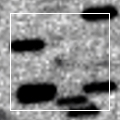
|
Now it is 17.9 mag (Dec. 31, Toshihiko Ikemura, Hirohisa Sato). It is observable at 18 mag in winter.
Date(TT) R.A. (2000) Decl. Delta r Elong. m1 Best Time(A, h)
Jan. 5 6 48.42 21 38.7 2.521 3.504 176 17.9 23:49 ( 0, 77)
Jan. 12 6 43.36 21 52.0 2.528 3.498 168 17.9 23:16 ( 0, 77)
|

|
Now it is 18.0 mag (Dec. 13, Toshihiko Ikemura, Hirohisa Sato). It stays 17 mag from spring to summer. But it is hardly observable. In the Northern Hemisphere, it is observable only until May. In the Southern Hemisphere, it stays locating extremely low.
Date(TT) R.A. (2000) Decl. Delta r Elong. m1 Best Time(A, h)
Jan. 5 3 40.79 51 49.7 2.231 2.980 131 18.0 20:42 (180, 73)
Jan. 12 3 38.84 50 56.5 2.233 2.928 126 17.9 20:13 (180, 74)
|
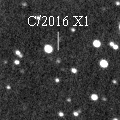
|
Now it is 18.1 mag (Dec. 14, Toshihiko Ikemura, Hirohisa Sato). It is observable at 18 mag in winter.
Date(TT) R.A. (2000) Decl. Delta r Elong. m1 Best Time(A, h)
Jan. 5 7 21.20 4 11.3 6.662 7.598 160 17.9 0:26 ( 0, 59)
Jan. 12 7 18.86 4 3.3 6.652 7.594 162 17.9 23:52 ( 0, 59)
|
|
![]()
 21P/Giacobini-Zinner
21P/Giacobini-Zinner C/2017 B3 ( LINEAR )
C/2017 B3 ( LINEAR ) C/2018 A6 ( Gibbs )
C/2018 A6 ( Gibbs ) 240P/NEAT
240P/NEAT C/2018 A3 ( ATLAS )
C/2018 A3 ( ATLAS ) C/2018 V1 ( Machholz-Fujikawa-Iwamoto )
C/2018 V1 ( Machholz-Fujikawa-Iwamoto ) C/2017 T2 ( PanSTARRS )
C/2017 T2 ( PanSTARRS ) 243P/NEAT
243P/NEAT C/2018 N1 ( NEOWISE )
C/2018 N1 ( NEOWISE ) 171P/Spahr
171P/Spahr C/2010 U3 ( Boattini )
C/2010 U3 ( Boattini ) C/2016 A1 ( PanSTARRS )
C/2016 A1 ( PanSTARRS ) 59P/Kearns-Kwee
59P/Kearns-Kwee 164P/Christensen
164P/Christensen C/2018 W2 ( Africano )
C/2018 W2 ( Africano ) 247P/LINEAR
247P/LINEAR C/2014 B1 ( Schwartz )
C/2014 B1 ( Schwartz ) P/2014 C1 ( TOTAS )
P/2014 C1 ( TOTAS ) 361P/2017 S4 ( Spacewatch )
361P/2017 S4 ( Spacewatch ) C/2015 V2 ( Johnson )
C/2015 V2 ( Johnson ) 74P/Smirnova-Chernykh
74P/Smirnova-Chernykh 239P/LINEAR
239P/LINEAR C/2015 XY1 ( Lemmon )
C/2015 XY1 ( Lemmon ) C/2018 F4 ( PanSTARRS )
C/2018 F4 ( PanSTARRS ) 369P/2018 P1 ( Hill )
369P/2018 P1 ( Hill ) 159P/LONEOS
159P/LONEOS 232P/Hill
232P/Hill 373P/2018 R2 ( Rinner )
373P/2018 R2 ( Rinner ) 31P/Schwassmann-Wachmann 2
31P/Schwassmann-Wachmann 2 C/2018 X2 ( Fitzsimmons )
C/2018 X2 ( Fitzsimmons ) C/2016 X1 ( Lemmon )
C/2016 X1 ( Lemmon )![]()









































